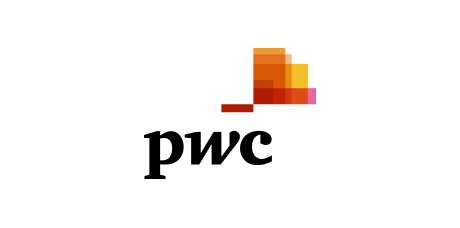The Triple Constraint, also known as the Iron Triangle or Project Triangle, is a critical concept in project management. In web development, it is crucial to keep in mind the three most important factors: scope, time, and budget. The complexity of web development can be overwhelming, with various components such as product features, monetization models, technology stacks, security threats, cloud capacity, and go-to-market strategies. Focusing on the project’s scope, time, and budget simplifies the process and serves as an efficient framework. This guide is handy for business leaders, managers and decision-makers planning to develop and launch their following web-based product.
1. Scope
Understanding a product concept or the intended result is one thing; being able to communicate to the client all the work and inputs necessary is quite another. For any given web app project, it’s crucial to define the project scope. The scope of the job must be agreed upon between the client and the service provider, including any contractor or consulting for web development.
Due to the knowledge and preparation their internal IT teams provide, larger companies can better understand what goes into building a web app. Smaller businesses and organizations, however, could unintentionally underestimate the effort needed to deploy web apps.
As a result, the production element of the product must be considered in the project scope documents. Both parties can easily picture the desired effect through a wireframe or mockup. Still, the service provider must also explain (and paper) all the technologies, technical know-how, and techniques required to make this happen.
The following are some of the typical sections found in a scoping document:
- The project’s goals
- Product details
- User profiles
- Components and capabilities
- Visual relics (e.g. wireframes, mockups, workflows)
- Stack of technologies
- Data specifications
- Techniques, strategies, and frameworks
- Project employees and their obligations (both from the client and the contractor)
- Calendar
Additionally, depending on the parties to the contract, a different document may be used to represent the project scope. It might appear in a separate scoping document, terms of reference, as a clause in the contract, an inception report, a project plan, or several other places. The fact that it is in writing and everyone can understand the content is what matters.
The process of finalizing a project’s scope involves both parties. The web development consultants offer suggestions for the best ways to achieve the client’s goals. Still, they also make accommodations for the client’s constraints, particularly those related to time and resources.
Watch out for scope creep.
You must monitor scope creep while the development phase is still in progress because it directly affects time and money. The term “scope creep” describes modifications made to the project’s scope while it is still being implemented.
Product development is a dynamic process that necessitates flexibility and adaptability, especially for startups or novel ideas. Although scope creep is undesirable, your project team must be ready for acceptable modification requests.
But as the project develops, the more scope adjustments you make, the longer and more expensive it gets. Substantive change orders are frequently the result of inadequate scoping and planning, even if this is to be expected, especially for increasingly complicated applications.
For simple projects, the project team must be rigorous in defining their project scope and adhering to their project plan while making a reasonable allowance for change orders. The change orders for projects with delicate schedules and budget restrictions must be strategic.
2. Time
The time it takes to complete a web app depends on a variety of things, including the budget, which we’ll discuss later, but it primarily depends on the breadth and complexity of the project. A project’s scope will take more person-hours or person-hours the more complicated it is.
We can divide the scope and complexity of a web app project into three categories for discussion and simplification, but also based on our experience: a basic web app, a mid-level app, and a complicated app.
Consulting companies or internal development teams have the necessary expertise to present a project timescale based on the agreed-upon scope, which strongly depends on the number of person-hours the project team will contribute.
You or your contractor may need to look for experts who can work with the development team if your product utilizes highly specialized technology (such as LIDAR, augmented reality, or the metaverse), which will also affect the time and cost.
The following timeline, albeit simplified, is a solid guide for a typical project duration based on the supposition that there will only be two developers on the development team. In actuality, the project team will need additional engineers if the client is ready to provide more financial resources, the more complicated the web app is or, the quicker it needs to be delivered.
- A basic web application: requires between 400 and 800 person-hours of work from the complete development team, which includes the project manager, business analysts, designers, developers, QA engineers, and other specialists. The unit can produce a simple web app with just two engineers in two to three months.
- Mid-level web application: The development team typically clocks 800-1,200 hours. Two developers can produce a mid-level web app in three to six months.
- Complex web application: The entire development team usually clocks at least 1,200 hours. The unit can complete a complicated web app in 6–12 months with just two devs (or more).
3. Budget
Web app development is a customized service. The accuracy of a cost estimate depends on the information the client supplies. Clients frequently describe their ideal product before asking how much it would cost to make it.
Allowing app development experts to delve deeper is essential for a project’s success. This will not only help them better grasp the client’s objectives and needs but will also enable them to offer technical and strategic solutions as well as best practices.
Delivering a given scope within a given period depends mainly on the number of people in the development team and their compensation when creating a budget for a web development project (or any software development project) (again, typically expressed or calculated as person-hours).
Budget and time are always intertwined in the creation of apps. When there is no deadline, projects tend to cost less. Clients will likely need to spend more money the sooner they need a project completed.
More developers can be hired or involved by development teams with more significant funding. Suppose a particular scope cannot be completed by a specific number of developers within an exact time. In that case, they will either need to employ more developers or extend the delivery term.
Hints for better controlling the price of web app development projects
You should be aware that some aspects will have to be sacrificed if you want to lower the possible cost of development. However, there are tried-and-true methods to maximize your investment while creating a web app.
- Agree on a precise and thorough work scope: Riscons can be reduced, and the development process sped up by writing out comprehensive project requirements. Before speaking with a third-party app development provider, if you can, record your needs. If your company lacks the internal expertise to complete this, you can ask the contractor to include it in their work. The likelihood that the software developers will be able to deliver the solution you seek within the agreed-upon budget and timetable increases with the clarity and thoroughness of the functional and technical requirements.
- Organize your web development team properly: The cost of your project is significantly influenced by how you use your development team. Today’s businesses can hire expertise from their internal teams, independent contractors, consulting firms, or a larger team. Each of these has its advantages and disadvantages.
- Set aside a sizable chunk of time for quality assurance: Another piece of advice for companies is to be open to setting aside time for quality assurance (QA). Remember that testing shouldn’t be conducted as the development process nears completion. There will inevitably be problems along the way, whether they are technical or not. Prototypes, alpha versions, and pre-release features might not function strictly as intended. Giving adequate time and effort to inspect, test, and execute QAation.
Managing Cost, Time, And Scope Trade-Offs

Businesses and their web development team must manage trade-offs between cost, time, and scope, just like other projects of any kind, to keep it on schedule and within budget.
The most typical trade-offs for handling the triple restriction in web development are listed below, some of which were already mentioned.
- Time and scope: If you need to complete the project quickly or are behind schedule, you must reduce the project’s size.
- Cost and scope: If you need to lower your spending, your web application’s content will need to be condensed. On the other hand, be ready to pay more if you need to expand your scope.
- Time and money: If you’re suddenly under pressure to complete the project more quickly, the project cost will need to go up.
Select The Best Web App Development Company.
You must clearly define and record your scope to allocate time and money appropriately. Gather your internal and consulting teams, and describe your product as completely as possible.
Business analysts, product specialists, designers, and developers will all be available to help you. They will assist you in developing your product concept in sufficient detail so that it can be executed successfully and respond to risks and shifting conditions.
This can be accomplished by collaborating with the ideal web app development partner. The first indicator to watch for is their openness to learning more about your product’s idea. They’ll pose pertinent queries, suggest tactical and strategic possibilities, and offer suggestions. They’ll help you define your needs and know how much time and money you need.







